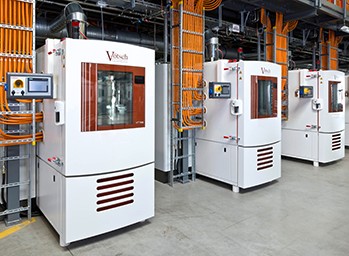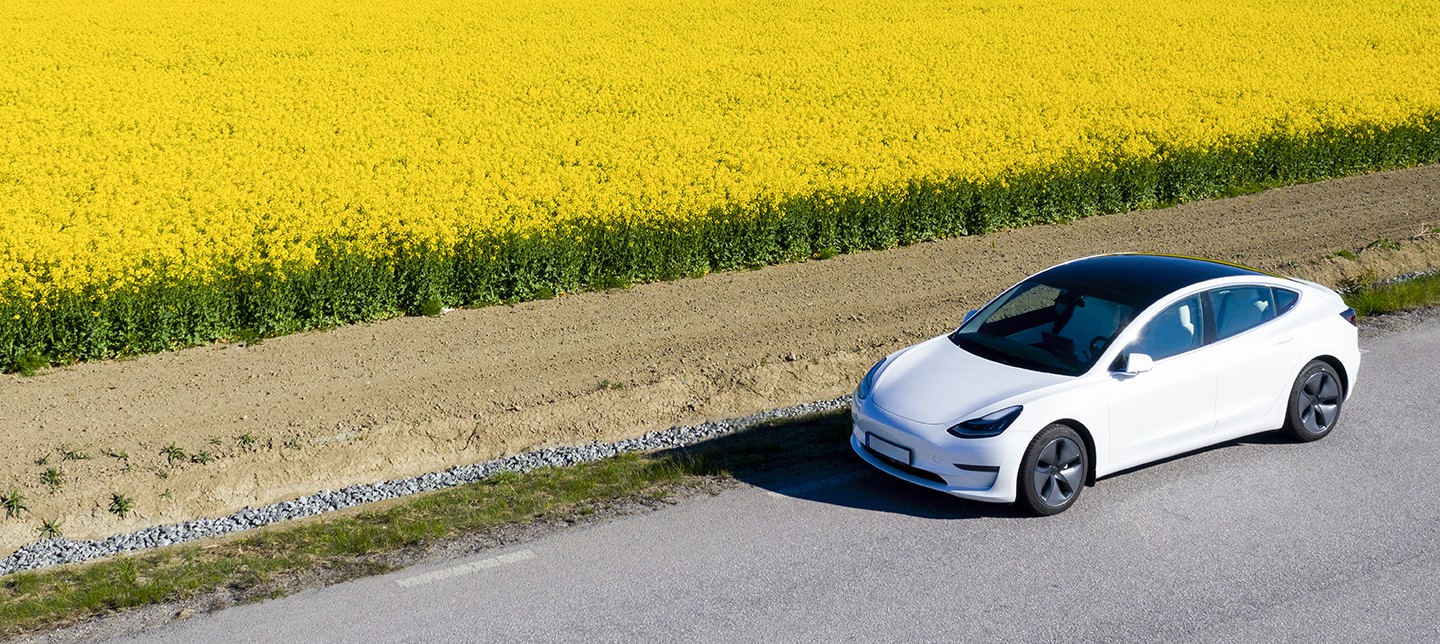
The Power of Synergy to Achieve EVs’ Sustainability
NI acquired Kratzer Automation AG’s Test System Business, expanding electric vehicle (EV) test capabilities for automotive customers.

In August 2021, the United Nation’s IPCC released the most comprehensive report to date summarizing climate change and the impact that humans have had on the earth. Essentially, the report concludes that we are the problem. The rising global temperatures are now unequivocally and directly linked to the behavior of humankind. Though the report is grim, all is not lost, and though we are the problem, we can also be a part of the ecosystem of solutions.
“We’ve known for decades that the world is warming, but this report tells us that recent changes in the climate are widespread, rapid, and intensifying—unprecedented in thousands of years,” Ko Barrett, IPCC vice chair and senior adviser for climate at the National Oceanic and Atmospheric Administration, said at a press conference announcing the report. “The bottom line is that unless there are immediate, rapid, and large-scale reductions in greenhouse gas emissions, limiting warming to 1.5 degrees Celsius—or 2.7 degrees Fahrenheit—will be beyond reach."1
According to Donald Wuebbles, a professor of atmospheric science at the University of Illinois and an author of the previous IPCC report, the primary drivers of the changing climate are energy, transportation, and land use. The main issues around climate change are related to what people are going to choose as the future directions in these three areas.2
Studies have proven that ground transportation is a large source of greenhouse gas emissions.
Currently, 29 percent of US greenhouse gas emissions come from transportation, and more than half of those are from light-duty vehicles, like passenger cars. Using their GREET model, researchers from Argonne National Labs estimate that through the full life cycle of a vehicle, from manufacturing through its recycling or disposal, an EV with a 300-mile range produces about half of the greenhouse gases of its gasoline-powered counterpart.3 As electric power generation shifts toward renewable energy, that figure drops closer to one eighth. The shift from internal combustion vehicles to EVs could single-handedly reduce greenhouse gas emissions significantly; however, this will require massive adoption in the consumer vehicle market.
In early August, President Biden gathered executives of the three biggest US automakers—Ford, General Motors, and Stellantis (which makes Fiat-Chrysler vehicles)—at the White House. During the meeting, the three companies jointly pledged that at least 40 percent, and as many as half, of vehicles they sell by the end of the decade would be zero-emission ones.4 Currently, EVs only represent less than 6 percent of production units globally, meaning that a huge gap exists between current state and aspirational state. That in turn represents a massive engineering challenge to design new models and technology, test them, and get them ready for production.
To reach that lofty goal, significant infrastructure improvements are needed, and the Senate recently passed a bill that would fund major enhancements to the existing charging stations around the country. These improvements would help address one of the key challenges that consumers see as a barrier to switching to an EV. According to a recent report from Deloitte, a lack of EV charging infrastructure was the largest factor standing in the way of people purchasing an EV.5
Though they can certainly help, EVs are not the silver bullet in solving the emissions problems the world is facing. In fact, it’s worth noting that there is risk in the proliferation of EVs, especially with respect to the battery. With exotic materials like cobalt and lithium and with voltages in some cases getting as high as 1,000 V, the batteries represent a complicated and dangerous part of the vehicle. Additionally, most of our experience with high-tech batteries comes from the consumer electronics industry where it might be almost expected for the battery in my phone to degrade over three or four years. These factors combine to create justifiable concern about electronics waste and highlights the need for better recycling technology to make EVs sustainable.
On the bright side, there are companies that are working to overcome some parts of these problems. Companies like Li-Cycle are working on new technology for breaking down batteries into their base components and making them nearly 100 percent recyclable. Another viable path to increase sustainability is repurposing and reusing EV batteries for energy storage, serving as battery backups for homes. EV batteries get replaced when they’ve lost around 20 percent of their capacity, but that leaves 80 percent capacity that can be repurposed where size and weight are less important; however, retesting and recertification of the devices for a new application is necessary, again highlighting the need for test.
The biggest challenge facing the growth of EV comes in the form of adoption. Quite simply, the consumer desire to purchase an EV will determine whether the EV market grows as quickly as expected. Cost plays the primary driver in this, but as manufacturing processes improve, the cost of materials required to build an EV will soon approach the material costs for an internal combustion vehicle. Additionally, a recent study from the Department of Energy’s National Renewable Energy Lab (NREL) showed that in addition to up-front costs of purchasing an EV, the overall cost of ownership including maintenance and either fuel or charging might already be lower for an EV depending on location and mileage driven.6
Families nationwide are beginning to consider adopting EVs as climate concerns grow.
Assuming both the up-front cost and total cost of ownership of an EV drops below that of its internal combustion counterpart, the remaining hurdle to growth comes from public perception. While range anxiety can be mitigated by purchasing a car with a larger battery pack and therefore ties back more directly to price, concerns like safety, reliability, and longevity of the vehicle must be addressed by the industry, and test plays a major role in this. Battery cyclers test battery packs by charging and discharging them to replicate drive scenarios and can run 24 hours a day so that in only a few weeks, engineers can understand how years of driving affect the battery capacity. Complex test systems allow the engineers designing the motor drives to ensure that the car not only accelerates and decelerates properly but that it also handles sensor faults correctly. Production test systems ensure that every subcomponent that goes into a vehicle on the assembly line performs as it was designed. These are only a few examples, but only through rigorous and advanced testing will the automotive industry be able to win the perception of a safe and reliable EV future. NI has committed to partner with our customers to facilitate this.
The automotive industry is driving toward a collective goal called Vision Zero—a future with zero collisions, zero congestion, and zero emissions. The last point is where innovation like that described above comes into play. NI is investing in technology that will help EVs be more reliable, efficient, and dependable. Test plays an important role in ensuring that EVs are as safe as possible so that when we hit that goal of half of the vehicle sales being zero-emissions ones, consumers can be confident that they’re buying a car that will stand the test of time. There are no shortcuts on the path to Vision Zero, but there is a better way to get there. Let us show you how.
______________________________________
1 Wired.com (8/9/21, retrieved 8/10/21)
2 vox.com/22613027/un-ipcc-climate-change-report-ar6-disaster (retrieved 8/9/21)
3 epa.gov/greenvehicles/electric-vehicle-myths#Myth5 (retrieved 12/19/21)
4 Aarian Marshall, “Biden Wants More EVs on Roads. What about Charging Stations?” from Wired.com (8/10/21, retrieved 8/10/21)
5 deloitte.com/us/en/insights/focus/future-of-mobility/electric-vehicle-trends-2030.html (retrieved 8/10/21)
6 nrdc.org/stories/electric-vs-gas-it-cheaper-drive-ev (retrieved 12/31/21)